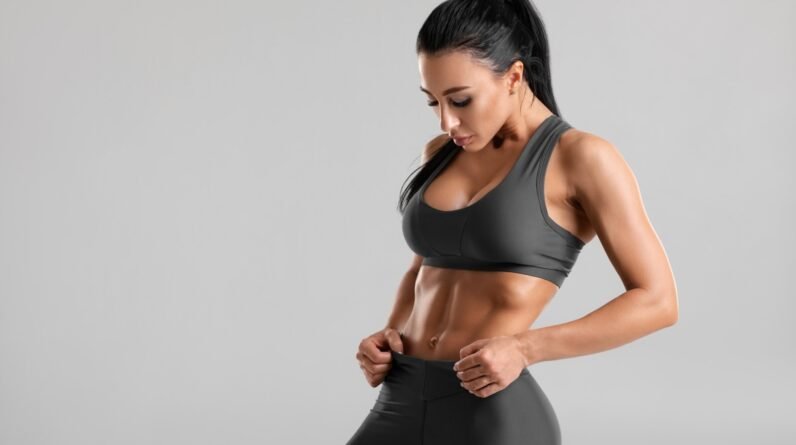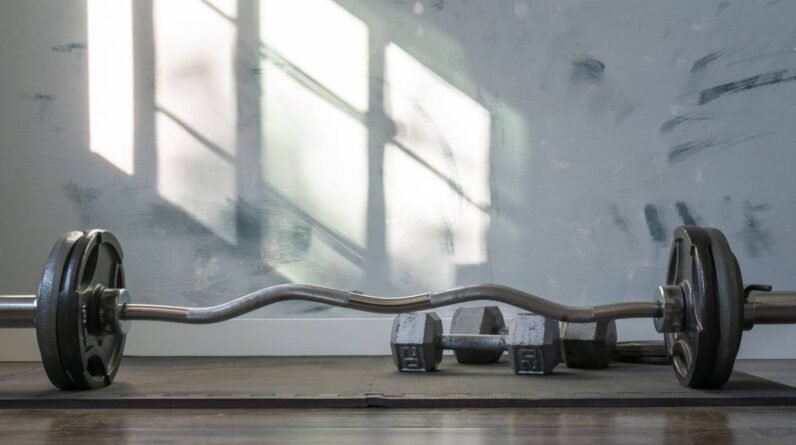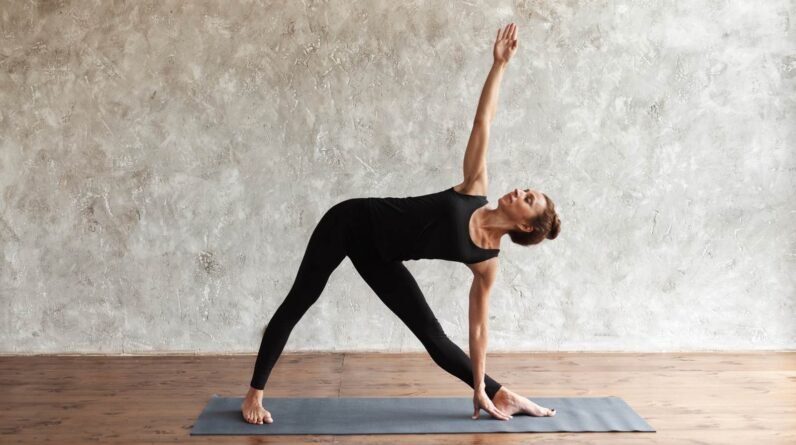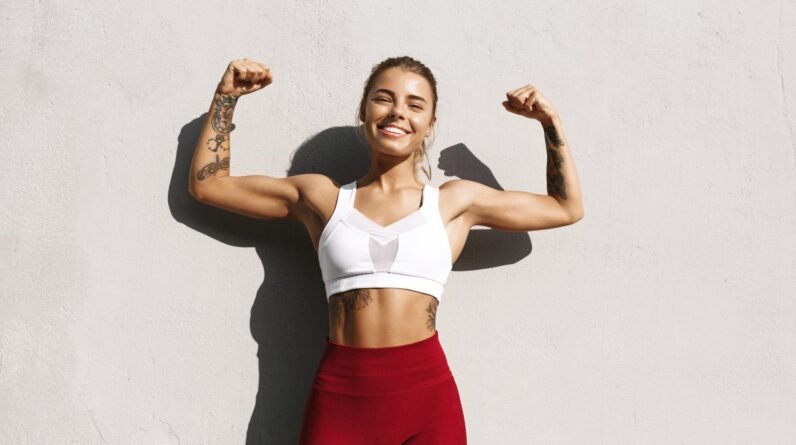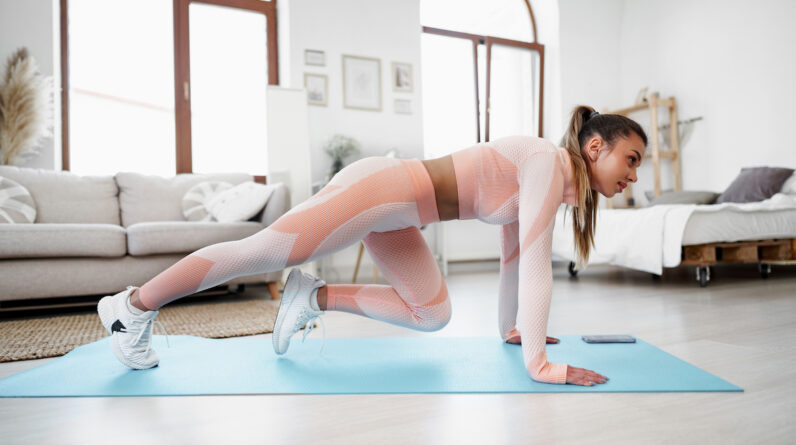
I’m not sure if this habit is a symptom or a cause of the fact that, honestly, I don’t love working out at home. So when I had the opportunity to try out some Pvolve fitness classes, I had tempered expectations. I knew the workouts were legit (Jennifer Aniston swears by them, after all), but was prepared for my attention to wander, as it always does.
Experts In This Article
- Antonietta Vicario, certified yoga and Pilates instructor and chief training officer at Pvolve
But Pvolve isn’t your average at-home workout. (Nor do they exclusively offer home workouts—they have several studios across the U.S. and Canada.) I found the functional, resistance-based exercises that had a Pilates twist kept me engaged because, often, they were quite different than anything I’d done before. In the past few weeks since getting my Pvolve membership and equipment, I’ve done 23 workouts—no brain-numbing reality TV or social media scrolling needed.
But the very things that make a Pvolve fitness class so unique and engaging can make getting started feel a bit daunting to newbies. Here’s what you should know before you dive in.
1. The equipment will probably be new to you
Usually, Pvolve workouts include some equipment, most of which is pretty unique to the brand. I got the Signature bundle, which includes three pieces of equipment (the Total Transformation bundle comes with 13 pieces):
- a precision mat
- a P.ball
- a P.band
Precision mat
Any workout where you’re standing happens on the precision mat, which has lines like a tic-tac-toe board and numbers like a clock face. The point is to make it easier to line your feet up exactly where they are supposed to be, according to Antonietta Vicario, Pvolve’s chief training officer.
That’s especially helpful because, often, Pvolve’s exercises involve rotation—so your hips may be facing a different direction than your feet, or one foot may be parallel and the other internally rotated. Having those lines as a reference made me feel like I was that much closer to proper form, even without an instructor there to adjust me.
Plus, the lines can help you track your progress as you get stronger and your range of motion grows, Vicario says. For instance, maybe one day you find you can step out further than you have before.
P.ball
The P.ball is like the ball you’d find in any barre class but attached to a heavy resistance band. Instead of just having a heavy band around your legs or a ball between your thighs, you have both, working your inner and outer thighs and your glutes all at the same time. (You can also use them separately as a more traditional ball and resistance band.)
P.band
As someone with small hands and terrible grip (I know, I know, I should work on that), the P.band is probably my favorite piece of Pvolve equipment. It’s a resistance band, but instead of having to hold onto it, there are gloves at either end that you just slide your hands into, so no strain on your hands or fingers.
“Fitness is not one-size-fits-all.” —Antonietta Vicario, chief training officer at Pvolve
2. There are tons of classes—and resources to help you figure out which to take
Log on to the Pvolve site, and it’s easy to be overwhelmed. There are the many different types of workouts—strength and sculpt, cardio burn, mat definition, recover and stretch.
There are also specially-curated series for things like postpartum exercise, improving knee stability, or moving with menopause. You can opt for the classes that Jennifer Aniston is loving right now, do bodyweight-only classes if you don’t have any equipment, or choose to take class with a live instructor.
Luckily, you’re not alone in figuring out where to start. Pvolve memberships come with a one-on-one session with a trainer to talk through your goals. There’s also a Q&A every Monday where new members can ask questions, plus lots of how-to videos and calendars with suggested workouts for your first few weeks.
Personally, I loved the many ways you can search for your next class—I found myself excluding classes with planks, as I’m recovering from an elbow injury, and narrowing my search to the exact amount of time I wanted to spend working out that day. (Classes range from just a few minutes long to over an hour.) You can also search by what kind of equipment is used, whether you’ve done the workout before, and more.
“We really believe fitness is not one-size-fits-all,” Vicario says. “What your goals are, where you are in your life stage, any specific areas you’re looking to target—that is going to affect the kind of workouts we would recommend and the structure of what a typical week would look like.”
3. You’ll want to wear sneakers
With the exception of the cardio burn classes, most Pvolve workouts are low-impact and resistance-based, and don’t involve much jumping. Still, Vicario recommends you wear sneakers, at least to start.
“A lot of times when we’re working on stability, you’ll have a bar there or something to assist you,” she says. “But we’re doing a lot of single-leg balancing in the center of the room while being rotated through the pelvis, so it can be tricky. Sneakers can provide a layer of support. Once you feel good, a lot of our members who’ve been with us for a while challenge themselves by taking the sneakers off.”
Shoes with a relatively flat bottom are going to be best for all that stability work—I found that my Reebok Nano X3 training shoes did the trick.
4. Some moves may feel awkward at first
Often when we work out, we’re moving either front-to-back or side-to-side. But working out is supposed to make us stronger for the movement we do in our daily lives, when we’re rarely moving in just one plane.
That’s why Pvolve’s exercises typically move in 360 degrees, which at first can feel challenging for both your body and your brain.
“We’re opening up space in a way that’s kind of unconventional,” Vicario says. “I like to use the image of being in a snow globe, and you want to find every part of that globe through the body, really taking the joints through their full range of motion. That helps get every muscle group active and working in concert, so there’s less repetitive movement that can cause strain. We’re trying to teach you good musculoskeletal rhythm and biomechanics so you can do anything you want to do safely.”
5. The exercises are meant to be done slowly
It wasn’t uncommon in my experience with Pvolve to realize I was moving much faster than the instructor was. I was rushing through the exercises while they were encouraging me to sustain a balance a little longer or stretch my range of motion a bit further. That’s pretty typical for newbies, Vicario says.
“A lot of times I see new people moving with momentum and missing the muscle activation piece,” she says. “It’s actually harder if you slow down and hold onto that place where your muscle is at its maximum contraction.”
6. It doesn’t have to be all-or-nothing
Sometimes it can feel like unless you work out for at least 45 minutes, you haven’t really worked out. But Vicario says that’s not the case.
“If you have 20 minutes, do a 20-minute workout,” she says. “It can be just as effective. Any movement is good movement.”


